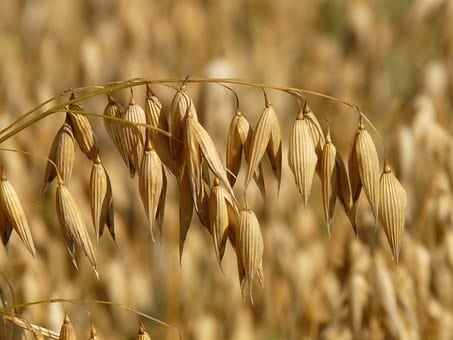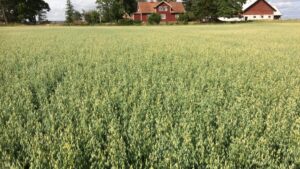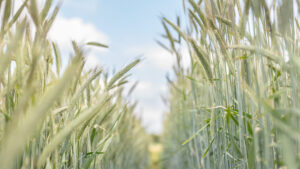According to recent statistics from the Natural Resources Institute Finland (Luke), the Finnish food industry used 90 million kilos of oats and 89 million kilos of rye during the 2016–2017 season.
During the 2016–2017 crop year, Finnish industry utilised nearly 1.4 billion kilos of both Finnish and imported cereals. The feed industry used a total of 606 million kilos of cereals, while the food industry used 429 million kilos and other industries used 334 million kilos.
Of the volume used by the food industry, a little more than half was made up of wheat. The volumes of rye and oats were nearly identical, with both accounting for roughly one fifth of the total volume. Barley had the lowest volume, accounting for only three per cent of the overall cereal volume.
The Finnish food industry used 90 million kilos of oats and 89 million kilos of rye during the 2016–2017 season.
The use of oats has increased in recent years. During the past crop year, the use of oats slightly exceeded that of rye, says Sirpa Karppinen, senior statistician at Luke.
Of the cereals used by the feed industry, barley made up a little more than one third, as did wheat, while oats made up less than one third. The use of barley by the feed industry remained unchanged during the past crop year. Instead, the use of wheat decreased by eight per cent and that of oats increased by 12 per cent.
Other industrial use covers, for example, malting and the production of ethanol, starch, glue powder and enzymes. Barley is the primary cereal used by other industries.
More bread wheat and less feed wheat from farms to the markets
Approximately half of all cereals produced on Finnish farms is sold to the markets and the other half is used on the farms, mainly as feed. During the 2016–2017 crop year, a total of two billion kilos of cereals and 81 million kilos of rape and turnip rape were sold from farms to the markets. Cereals were sold directly to industries or cereal traders, and part of the cereals was exported.
Barley accounted for the highest volume sold for trade, totalling 734 million kilos. Of this, one fourth was malt barley, which increased its proportion from the previous crop year. As much as 587 million kilos of oats were sold on the market, which was eight per cent more than in the crop year before. A total of 76 million kilos of rye were purchased from farms. This was 16 per cent lower than in the previous crop year. Rye crops were also lower in summer of 2016.
Farms sold nearly as much wheat as oats to the markets, i.e. a total of 575 million kilos. Of all wheat, half was purchased as bread wheat and half as feed wheat. Compared to the previous year, the purchase volume of bread wheat increased significantly and that of feed wheat decreased notably. On average, nine per cent less wheat was purchased. However, wheat crops in the summer of 2016 were also smaller.
Cereal stocks reduced
At the end of June, trade and industry stockpiles contained a total of 419 million kilos of cereals. This is 25 per cent lower than the year before. Oats and barley had the highest stockpiles, both totalling a little more than 120 million kilos. The volume of oats was at the previous year’s level, while the volume of barley nearly halved. Rye stocks decreased to 60 million kilos and wheat stocks to 104 million kilos.
Cereal prices on the rise
The producer prices of cereals are monitored on a monthly basis. The average producer price of wheat, barley and oats increased throughout the first part of 2017. In June, the average basic price of bread wheat was EUR 154 per tonne, being six per cent higher than in the previous year. The average producer price of feed barley was EUR 129 per tonne, being two per cent higher than in the year before.
Background to the statistics
Information about cereal purchases and their entry into the market is collected on a quarterly basis from all companies in Finland that buy cereals or rape and turnip rape directly from farms. Information about the use of domestic and foreign cereals is collected on a quarterly basis from the food and feed industries and other industrial sectors using cereals. Stockpile information is collected biannually from all companies that have cereals in stock at the end of June or December.
Source: Seed Quest













